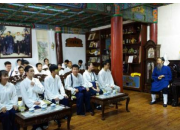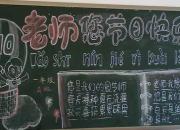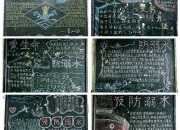Module 10 Unit2 Point to her nose的教案
时间:2021-08-31Module 10 Unit2 Point to her nose的教案分析及教学反思
一、教材分析:本节课的教学内容选自新标准《小学英语》三年级起点第一册Module10 Unit2。本节课要求学生在掌握Unit1 This is his head的基础上,继续学习身体部位的词语nose, ears, eyes, mouth,以及his和her的用法。
二、设计思路:本课的设计主要运用了“任务型”教学法,在刚上课时就在教学中采用多样化的教学手段将听、说、玩、演、唱溶于一体,激发学生学习英语的兴趣和愿望,使学生通过学习体验荣誉感和成就感从而树立自信心,发展自主学习的能力,形成初步用英语进行简单日常交际的能力。
三、教学目标:结合新课程标准提出的基础教育阶段英语课程的总体目标和具体要求我将本课教学目标设计如下:
语言知识目标:
1、使学生掌握身体部位的单词:eyes、ears、nose、mouth
并运用句型:Point to?
2、学习认读分辨单词:his和her
3、学会唱英语歌:Head and shoulders
语言技能目标:
①、使学生能够根据指令做动作。
②、根据图片和身体部位说出单词和句子。
③、能区分his和her。
情感态度目标:
通过本课学习使学生有兴趣听、说英语、读歌谣、做游戏、敢于开口,乐于模仿,在鼓励性评价中树立信心.在教学中渗透学生学习习惯的养成教育。 重点:能够熟练掌握单词eye,ear,nose,mouth;
难点分析:mouth 一词的尾音发音较难,教师可适当提醒学生,注意口型。
四、教学对象分析:三年级的学生好动,喜欢游戏,乐于参与和表演,所以这一节课要创设一定的情境,让学生在情境中学习,多种教学手段交替使用,尽量利用实物、图片以及课件等直观教具进行教学,使学生始终处于新鲜、求知欲旺盛、学习情绪高涨的氛围之中。
五、1、教学策略:本课时主要是学习有关器官的单词,教师要尽可能利用各种媒体手段,如实物、图画、动作、课件、等进行教学,形象直观,生动活泼,有助于吸引学生的注意力,激发他们的兴趣,有助于帮助学生直接理解所学内容。要尽量多给学生提供参加语言交际的.机会,只有交际化的教学才能使学生感到所学内容有趣,达到学以至用的目的。
2、教法设计:在教学中,运用图片、实物,多媒体等作道具,创设情景场面进行情趣操练。让学生在欢乐、活跃的氛围中,产生轻松、快乐、自信的感觉,从而激发学习热情,培养学习兴趣。
① 情景教学法
② 多媒体教学法
③ 全身动作反应法
④ 游戏辅助法
六、教学媒体设计:nose.mouth.eye.ear的教学课件及脸型的幻灯片,在呈现新课时运用。
教学步骤:
Step One: 热身活动 Greetings
Say ‘hello’ to each other.
Step Two: 导入Representation
1) T: Now, let’s say a chant.
Ss: (Say the chant together.)
Head head Point to your head. Arm arm Point to your arm.
Leg leg Point to your leg. Foot foot Point to your foot.
(此环节中chant有助于营造宽松、愉悦的语言学习氛围,利于学生积极情感态度的形成。既可激发学生的学习兴趣,有效地复习旧知,同时也为新知的进一步学习起到了铺垫的作用。)
2) Ask a boy to the front, teacher points, then let the other students say ( point to his head,…)
Step Three: 呈现新课
A. New words
T: Point to your nose. (Write ‘nose’ on the blackboard.) group by group.) T: (Show some pictures of animals’ noses.) Which animal’
Ss: (Point and read after the teacher, practice one by one . s nose is it?
S1: It’s the pig’s nose.
S2: It’s the dog’s nose.
S3: It’s the panda’s nose.
T: (Point to my nose.) Whose nose is it?
Ss: It’s the teacher’s nose.
T: I can smell with my nose. I can see with my …
Ss: Eyes.
T: (Write ‘eye’ on the blackboard.)
Ss: (Read after the teacher, practice one by one, group by group.)
T: How many eyes have you got?
Ss: Two eyes.
T: Close your eyes. Open your eyes.
Ss: (Listen and do.)
Use the same way to learn the following words:
mouth (eat) ear (hear)
(多种感官参与学习活动的设计符合低年级儿童的生理及心理特点,学习效果好。变换不一的操练形式,避免了学习语言时的枯燥、乏味感。)
B. New pattern drills
T: (Show a doll.) Look! What’s this?
Ss: It’s a doll.
T: This is my doll. It’s got two big eyes, a small nose, a red mouth and two small ears. It’s very beautiful. I like her very much. Do you like her?
Ss: Yes!
T: Now, listen and point, please. Point to her nose/ eyes/ mouth/ears/ head/ arms/legs/hands/feet.
Ss: (point and say.)
(帮助学生熟练身体各部位的名称,锻炼学生的快速反应能力。)
T: (Write ‘Point to her’ on the blackboard.)
Ss: (Read after the teacher, practice row by row.)
T: Can you make a chant?
Ss: Nose, nose, point to her nose.
Eyes, eyes, point to her eyes.
mouth, mouth, point to her mouth.
Ears, ears, point to her ears.
(整节课的板书都是随着学生的认知、理解过程逐渐完善的,而非机械地呈现、认读、记忆,体现出了逐层深入的教学原则。)
C. Learn the contents of the text
a. Listen and point .
T: (Play the tape-recorder.)
Ss: (Listen and point to the sentences.)
b. Listen and say.
T: (Play the tape-recorder again.)
Ss: (Listen and repeat.)
c. Point and say.
Students take out their dolls and talk about the parts of the dolls’ bodies.
S1: Point to her/ his …
S2: (Point and say.)
D. Learn to sing.
a. Listen and sing.
T: (Put the word cards on the blackboard: head, shoulders, knees, toes. Teach the students these words.)
Ss: (Read after the teacher, practice line by line.)
b. Sing and do the actions.
T: (Play the tape-recorder.)
Ss: (Sing and do the actions.)
Step Four: Knowledge extension.
A. Let’s draw.
Draw four faces on the blackboard. Let some students draw eyes, mouths, ears and noses on the faces. In order to make this game more interesting, teacher can let the students close their eyes.(通过学生的音量让贴的同学确定五官的位置。) (在游戏活动中巩固所学,符合课标提倡的“玩中学”观点。)
B. Let’s talk.
Divide the students into several groups. Every student takes out some stationeries, and then put them together. Let them find the owners.
S1, S2, S3, S4: This is my… This is his … This is her…
(此这项活动形式不仅能让学生得以最大的空间和时间进行语言操练,而且最能让学生在相互的交流中互相帮助,互相检验所说的语言。学生有了充分的相互交流的时间,有时间相互商讨、演练,以便在说给全班同学听时能够更加默契。有了成功表现自己的机会,也对他们的学习起了极大的鼓舞和促进作用。) Step Five: Sum up.
T: Today we learnt four new words…
Ss: Nose, eye, mouth, ear.
T: And a sentence pattern…
Ss: Point to her…
Step Six: Homework.
Do the exercises on page 42. 1. Look and say.
Handwriting on the blackboard:
Module10 Unit 2
nose.
Point to her mouth.
ears
eyes.
教学反思:本课教学充分调动了学生的眼、耳、口、手等器官,通过视、听、说、表演等活动,使学生在轻松愉快的气氛中学习英语,使他们感到学语是一种乐趣,而不是一种负担。在教学中做到了教、学、做合一,在学中用,在用中学,达到了学以至用的目的,并培养了学生的综合语言运用能力和交际的能力。
设计思路及多媒体应用分析
通过Greeting和Singing来活跃气氛,让学生很快融入到英语学习的氛围中,同时为下面的引出做铺垫。
用形象生动的教学课件来创设情境,引发学生学习动机,设难置疑,引起思辨,使新的知识点变得直观形象、生动化,有助于吸引学生的注意力,激发他们的兴趣,使学生始终处于新鲜、求知欲旺盛的学习氛围,有利于学生对新知识的掌握。 通过多媒体投影,呈现过程,形成表象,以更直观的方式,让学生巩固新学的单词。
通过直观的布娃娃的方式,调动学生学习积极性,调节课堂气氛。激发学生兴趣,让每个学生都动起来,自然地掌握her 及句型的用法。
通过参与和合作等途径,充分掌握已学知识。
这部分的听力练习,是对上一步骤的总结,又是对本课重点的巩固和加深,培养学生积极的学习态度,发展学生语言活动中的多维能力。
通过游戏活动调动学生的积极性而且复习、巩
固所学的知识点。而且为下一步骤做铺垫。
通过画图画,激发学生学习英语的乐趣,创设愉快的氛围。通过小组对话、做“击鼓传花”的游戏,给学生提供参加语言交际的机会,交际化的教学能使学生感到所学内容有趣,达到学以至用的目的。孩子们不仅可以掌握语言的表达方式,而且还分享着大家智慧和创造力,可以培养学生的团队合作精神。
让学生欣赏英文歌曲,欣赏审美,陶冶学生的情操,既有助于放松缓解压力消除疲劳,让学生在乐中学,在学中乐。
由课本知识拓展到实际生活中,进一步学生综合运用英语的能
今天我所讲的是新标准《小学英语》三年级起点第一册Module10 Unit2。这节课的教学目标1、是使学生掌握身体部位的单词:eyes、ears、nose、mouth并运用句型:Point to?2、学习认读分辨单词:his和her3、学会唱英语歌:Head and shoulders从总体上看在本节课的教学中,我始终能够围绕教学目标
【Module 10 Unit2 Point to her nose的教案分析及教学反思】相关文章:
1.《Module 10 Unit 2 Point to her nose》说课稿











